Environmental Risks of Shopping Centers
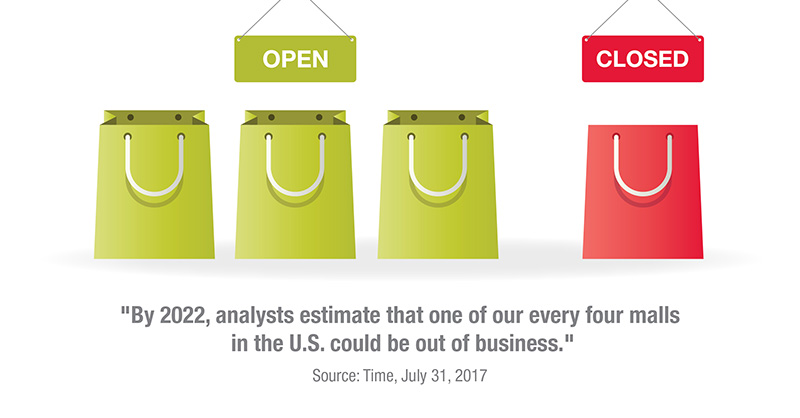
In the late 1950s, construction of indoor shopping malls began, and construction continued to escalate through the 1960s, 1970s, and 1980s. Since, construction of malls has significantly declined with the last indoor mall in the U.S. built in 2007. (2) The Atlantic Magazine estimated that of the approximate 1,200 malls in the U.S., one third are “dead or dying”. These malls, which were once thriving economic and social centers, have recently fallen on hard times with many failing, while a significant number of others are closing or being demolished. Many failed or failing malls may lay largely vacant, and ultimately face demolition and subsequent redevelopment. The redeveloped shopping centers are often transformed into warehouses, industrial parks, multi-family residential properties, or repurposed for some other different retail/business use. Some mall redevelopment projects include:

A good example of this type of mall transformation is the former Ballston Common Mall in Arlington, Virginia. This mall, constructed in 1951, was one of the first suburban malls in the Washington, DC area. Even while located adjacent to a Washington Metro stop, the mall started to lose customers. In 2013, the mall underwent significant renovation during which, a large food market and restaurant area, an ice rink (which is now the training center for the Washington Capitals), spas, theatres and music venues were added. (3)
A failing mall is a problem for a community, as the complex often falls behind on taxes, requires additional police and fire protection, and can serve as a magnet for vandalism, arson, trespassers, and trash dumping. While not all of these are environmental problems, they all eventually become liability issues for a community and the mall owner.
Pre-existing Environmental Concerns
Many shopping centers are located in high traffic areas—in sites that were selected because of the ease of bringing shoppers to the center by car. Historically, the accessible location also made them good locations for gasoline stations and auto repair shops, prior to development of the shopping center. Even after development of a shopping center, many gasoline stations and auto service centers were located on or adjacent to the shopping center property. In addition, many retail centers included dry cleaning operations that used perchloroethylene (PCE). Prior to redevelopment of a shopping center property, former gasoline stations must be identified, investigated and remediated, if contamination is present. This usually involves removal of underground storage tanks, auto lifts and underground oil reservoirs.
Many shopping centers also contained large auto service centers as part of the complex. These service centers typically operated below-grade oil-filled hydraulic lifts, fuel and/or oil-filled underground storage tanks (USTs). The service centers may have also used chlorinated solvents for parts, washers or other repair. Each of these items may pose expensive environmental liability if not identified, investigated and remediated before a site undergoes redevelopment.
Case Studies
Mall Redevelopment: (4)

In the 1960s, a shopping mall was constructed in Parole (Annapolis), Maryland
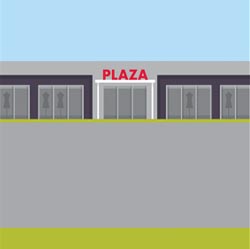
By the 1990s, this shopping center was dated and was not competing with a newer, close by mall, the Westfield Mall, which opened in 1980.

Located near a rapidly urbanizing area, the mall property was valuable and envisioned for redevelopment by several developers.
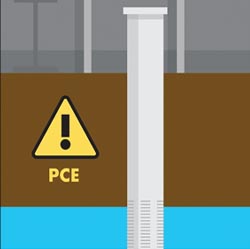
In an environmental investigation of the former Parole Plaza, PCE was found near a former dry cleaner and in several groundwater monitoring wells.
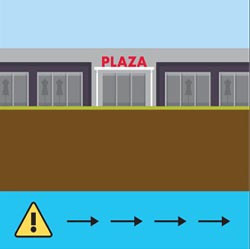
Continued investigation of the site noted that, while a water well at a local bank was not impacted, there was a significant groundwater contaminant plume migrating from the site.
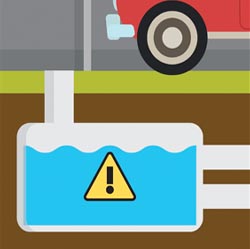
Subsequent environmental investigation identified additional contamination on the former mall property from the former on-site automotive centers and underground storage tanks.

The site was remediated under a Prospective Purchaser Agreement. The Maryland Department of the Environment granted inculpable person status to the new site developer, Annapolis Towne Center at Parole, LLC, based on data showing pre-existing contamination.
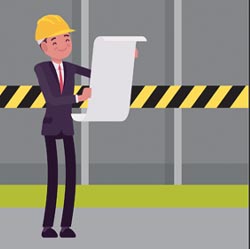
The developer remediated the site using soil vapor extraction, in-situ chemical oxidation, in-situ bioremediation, and monitored natural attenuation, which allowed site development to occur.

Site redevelopment included a series of restaurants, a residential development, and several storefronts.
Prior Land Use
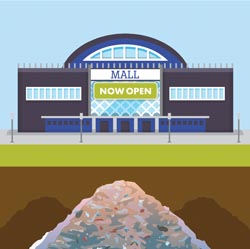
A mall was constructed over a former landfill in Garfield Heights, Ohio. It opened in 2006 with several major stores such as a Dick's Sporting Goods and, Walmart, etc.
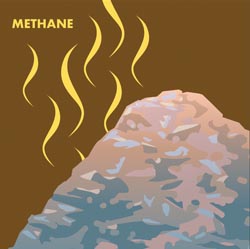
However, soon after the mall opened, methane, emanating from the underlying landfill, became a problem in many of the stores.

The methane caused stores to leave the site, due to perceived and actual safety problems.

Even though the former landfill was capped with a two-foot thick clay layer and a one-foot gravel layer, methane still managed to migrate into the stores, causing health and safety concerns.

Once Walmart left the site, the secondary stores started leaving with the mall site now at least two-thirds empty.
Due Diligence
When considering the redevelopment of a current or former mall property, it is very important to get and review prior Phase I, Phase II and other historical documents. Major red flags include:
- Former industrial operations
- Former gas stations (on-site and adjacent)
- Former dry cleaners (on-site and adjacent)
- Prior land uses such as landfills, quarries, sand mining, etc.
- Oil storage facilities
Operating Mall Environmental Problems
Even if a mall is solvent and functioning well, the mall has to proactively manage its environmental programs and exposures. Many malls have to contend with tenants that operate underground storage tanks, automobile lifts, hydraulic elevators with oil tanks, and potentially PCB-containing electrical transformers. Coupled with these concerns are problems associated with asbestos containing materials encountered during normal maintenance work and managing water leaks that could lead to mold growth. Note: A broken water pipe in a mall often leads to mold, ACM and lead based paint remediation.
Malls also have to manage “normal” wastes such as trash and used solvents. A mall should have a waste management program in place, so that they know where their trash is disposed, where the recyclables are managed, and how hazardous waste is handled and disposed. This prevents future waste disposal liability, especially if the mall owner is a large real estate firm.
Due to their large parking lots, malls may need to be concerned about storm water runoff from those areas and the potential impact to receiving nearby water bodies. In 2012, the Maplewood Mall in Minnesota was noted as a major contributor of phosphorous to Kohlman Lake. Maplewood Mall then instituted a major project to capture and filter 67 percent of storm water at the mall. The program involved building rock trenches, a cistern, permeable paving surfaces and rain gardens. (6)
Mall Re-Use/Demolition
Even if a mall appears to be in very good shape prior to its re-use, due to the old age of many malls, asbestos, lead-based paint and PCBs (potentially in paint, caulk and fluorescent light ballasts) may require active management/remediation. Sometimes hazardous materials may be uncovered in unexpected areas such as Tritium in exit signs or in emergency lighting systems. Asbestos may also be found in floor tiles, ceiling tiles, carpets and fire doors. A thorough property survey, coupled with a Phase I ESA, is a valuable aid in uncovering what environmental problems a site might have. Asbestos in roofing materials may generate large amounts of waste requiring special handling and disposal.
Recently, when the mall in Helena, Montana was shuttered and slated for demolition, asbestos investigation and remediation took many months. (7) Fortunately, there are no other known environmental problems associated with this mall.

- During demolition of the Schuylkill Mall in Frackville, Pennsylvania, demolition uncovered several underground storage tanks associated with the former mall operations. Each major anchor store (Sears, J C Penny’s, Hesse’s and Rite Aid) had an underground storage tank for oil heat.
If a mall has been vacant for a longer period of time with the HVAC system turned off, significant mold growth can occur in the structure. Mold grows quickly in carpeted surfaces, fountains, ceiling tiles, and other organic interior surfaces. Prior to demolition or other re-use, this mold must be managed. Other damage to the mall structure and exterior can be caused by vandals, copper thieves, and vagrants. Any sub-basements, pits, or sumps may have water that must be managed/treated prior to disposal. During demolition, any oil/grease traps, cisterns, dry wells, etc. must be investigated to ensure that no environmental conditions are present. If a mall is abandoned for a significant period of time and not properly maintained, substantial structural damage in the way of rust, water infiltration, ruined wall coverings, etc., may impede the inspection and damaged materials removal. Much of this damaged material will require landfill disposal, as water damage makes many building materials unrecyclable. In summary, malls can quickly go from valuable real estate space to a toxic nightmare, requiring extensive and expensive environmental management.
How to Mitigate these Risks
Fortunately for site owners, sellers, buyers, developers, lenders and other interested parties, environmental insurance is available to help mitigate the risks described above. Environmental polices provide coverage for pollution conditions on, at, under, or migrating from the site (on-site and off-site) in all media including land or structures thereupon, the atmosphere, or any watercourse or body of water including groundwater.
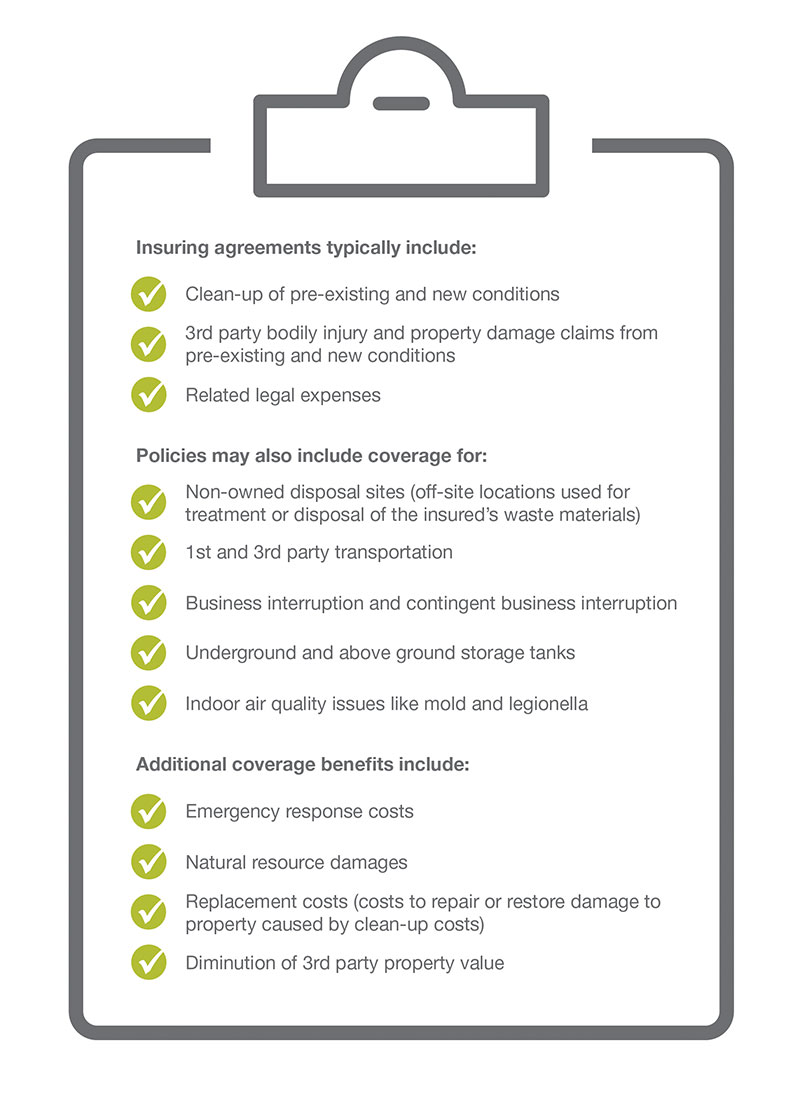
It is important to note that there must be a pollution condition for coverage to apply.

A pollution condition includes the discharge, dispersal, release, seepage, migration or escape of pollutants into the environment. Pollutant is typically defined to include any: solid, liquid, gaseous, or thermal pollutant, irritant, or contaminant, including but not limited to smoke, vapors, odors, soot, fumes, acids, alkalis, toxic chemicals, hazardous substances, petroleum hydrocarbons, waste, including medical, infectious, red bag, and pathological wastes, legionella, electromagnetic fields, mold matter and low-level radioactive waste and material. This typically includes the release or discharge of contaminants into the ground or atmosphere, although a pollution condition may also include the illicit abandonment of pollutants at a covered location by a 3rd party, and even chemicals associated with meth labs.
The ultimate structure of coverage will depend on the technical information available for underwriting, including in particular the findings of available environmental due diligence. While an underwriter would not require the insured to conduct due diligence for the purpose of obtaining environmental insurance, any recent and detailed environmental information allows the underwriter to craft bespoke coverage for each insured around the conditions of the site. Other valuable information needed for underwriting includes future renovation or development plans (if applicable), property condition assessment reports, and details regarding the insured’s environmental management and control of the site.
The more information that’s available, the better the coverage can be tailored.
Factors such as the past history of the site, existing contamination, on-going management and operations, and future development are factored into the underwriting process and the crafting of policy terms and conditions.
Great American offers environmental insurance to help mitigate the risks described above. Contact us to further discuss how we can best protect your clients including – site owners, sellers or buyers, developers, lenders and other interested parties!
References
- Time, July 31, 2017
- The Death and Rebirth of the American Mall – Smithsonian Magazine, November 25, 2014
- Ballston Quarter
- Facts About Annapolis Towne Center at Parole Main Parcel & Annex Properties (Voluntary Cleanup Program); Maryland Department of the Environment; October 2010
- Cleveland Plain Dealer, March 15, 2009
- Maplewood Mall Retrofit; Ramsey-Washington
- Helena’s Capital Mall Set for Demolition Next Year, MTN News, December 23, 2018









